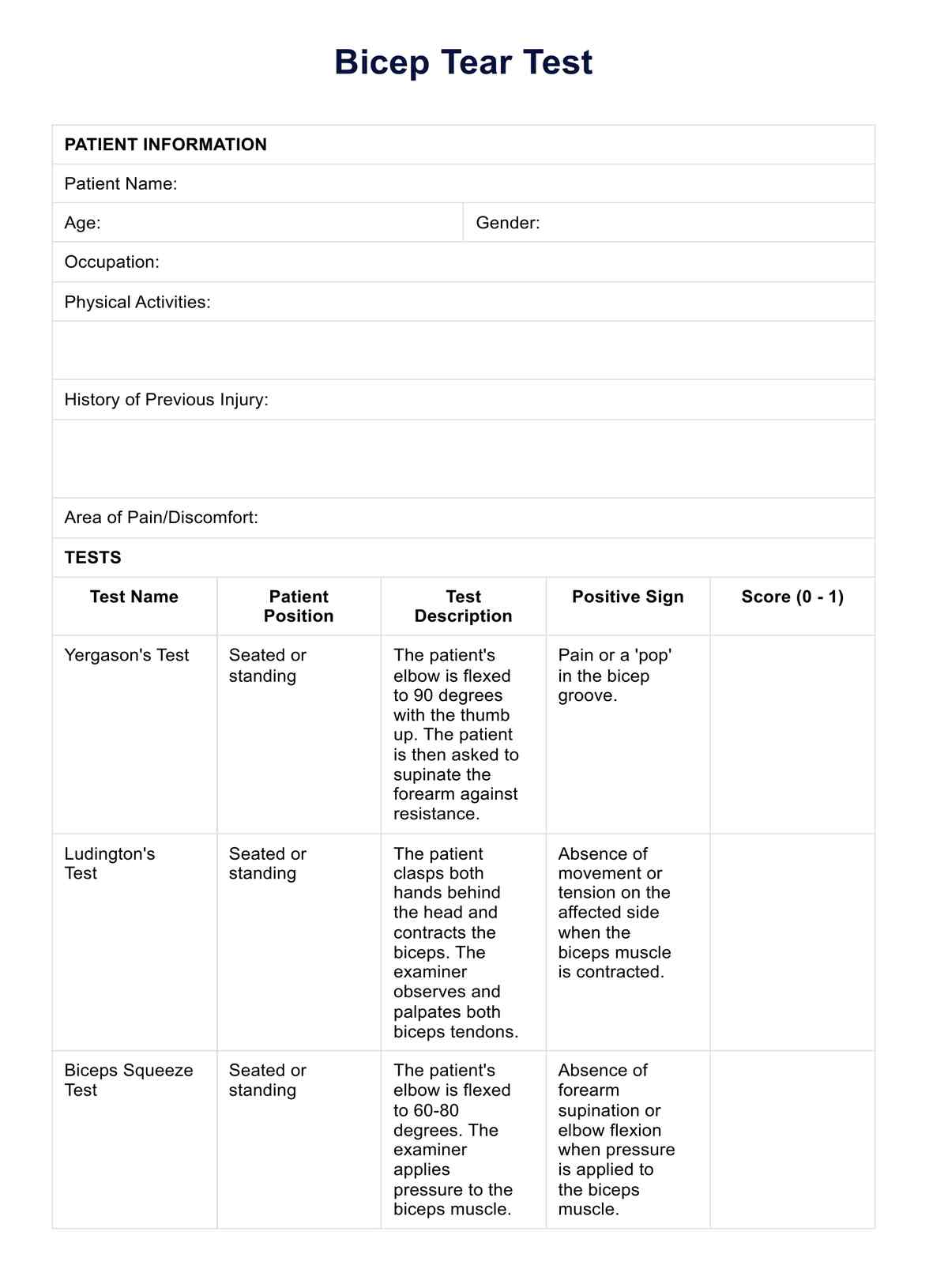The Bicep Tear Test is designed to assess potential bicep tears. However, the individual tests may help identify other related shoulder or arm conditions.

Bicep Tear Test
Understand, assess, and manage bicep tears effectively with our detailed guide. Free comprehensive assessment template inside. Upgrade your practice now.
Use Template
Bicep Tear Test Template
Commonly asked questions
The frequency of the Bicep Tear Test during rehabilitation depends on the patient's progress. It's typically conducted regularly to monitor healing and response to treatment.
While the Bicep Tear Test is a valuable tool in clinical assessment, it doesn't replace imaging tests like MRI or ultrasound, which provide detailed insights into the anatomy and any potential damage.
EHR and practice management software
Get started for free
*No credit card required
Free
$0/usd
Unlimited clients
Telehealth
1GB of storage
Client portal text
Automated billing and online payments











